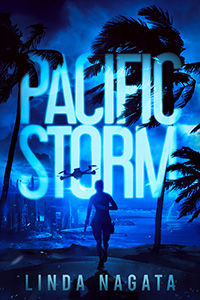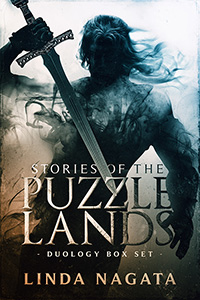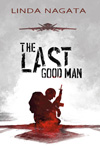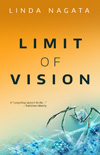 I haven’t been posting much here or on Twitter, in part because things at our home are much the same from day to day, so there’s not a lot to report.
I haven’t been posting much here or on Twitter, in part because things at our home are much the same from day to day, so there’s not a lot to report.
After finishing the first draft of the current novel, I took a little over a week off. Before I went back to work on it, I set up a new daily schedule. I still get up around 5:30 or 6am, as I’ve done for many years. After giving the dog a couple of minutes outside, I get to work on the novel, and continue working on it — in several sessions with breaks between — until the early afternoon. This is where my schedule has changed.
Instead of going back to the novel, I try to shift to a publishing chore — contracting for a new book cover, setting up promotion for a sale, prepping my newsletter, writing a blog post(!), or reading an advance copy of someone’s new novel…
(Wait! Reading is not a chore.)
(Oh — and a belated THANK YOU to everyone who helped spread the word about the recent ebook sale. It’s truly appreciated.)
But back to the schedule…
In the late afternoon, I try to exercise or do yard work. Years ago my daughter bought me the soundtrack from the Broadway play Hamilton — which I never listened to…until now! It’s perfect for jogging on the treadmill†because I focus on understanding the lyrics instead of on how much farther I still have to run. It has also inspired me to start listening to the audiobook edition of Ron Chernow’s biography, Alexander Hamilton, which was supposedly an inspiration for the play.
Once a week, Ron and I will go to the post office to check the mail. Every two weeks, we go all the way into town for a supply run. Masks are now mandatory. Each time we’ve gone to town, I’ve been surprised at how many people are out and about, given the lockdown. The parking lots at Lowes and Home Depot are packed! I guess people have decided they might as well do home improvement projects while they’re at home. It’s also true that landscape and construction companies are considered “essential businesses” here and are still allowed to work.
Hawaii still has a comparatively low rate of COVID-19 infection. The governor essentially closed the border by mandating a 14-day quarantine for anyone arriving in the state, so the visitor industry is on hold. Unfortunately, here on Maui we had a large cluster of infections among hospital staff, which is very troubling.
Ron and I are incredibly lucky because we can stay home, and we’re comfortable here, with room to wander, the means to exercise, and a quiet neighborhood around us. I know almost everyone else out there is facing far greater challenges — and knowing that, it’s tempting to rage on politics — the incompetence, bullying, and malice of the current administration, their don’t-give-a-shit behavior, their determination to roll back environmental regulations, and to siphon off taxpayer money for their own benefit and that of their wealthy friends, and all the rest of it. But you hear about that all the time, don’t you? I know my Twitter feed has become a very dark place.
Here’s hoping we throw out the whole cohort of GOP bums in November.
In the meantime, I find myself a bit worried over all those dogs in America who are going to have separation anxiety when their beloved humans finally go back to work…
Please take care of yourself and take care of each other.
†I suspect this treadmill won’t last much longer, as the electronic dashboard has become intermittently non-responsive. Sigh.

 1. WRITE AND FINISH A NEW NOVEL
1. WRITE AND FINISH A NEW NOVEL • I commissioned a nice book cover for an omnibus edition of the Puzzle Land books. I really like those crazy grimdark fantasy stories! The omnibus is available from Amazon in both print and ebook editions. (paid links)
• I commissioned a nice book cover for an omnibus edition of the Puzzle Land books. I really like those crazy grimdark fantasy stories! The omnibus is available from Amazon in both print and ebook editions. (paid links)










 I haven’t been posting much here or on Twitter, in part because things at our home are much the same from day to day, so there’s not a lot to report.
I haven’t been posting much here or on Twitter, in part because things at our home are much the same from day to day, so there’s not a lot to report. 
 Hey, amid these crazy days, I forgot to mention here that I finished a rough first draft of the new novel. I actually finished on March 14, and mentioned it on Twitter, but I wanted to talk a little bit about what was different this time.
Hey, amid these crazy days, I forgot to mention here that I finished a rough first draft of the new novel. I actually finished on March 14, and mentioned it on Twitter, but I wanted to talk a little bit about what was different this time. Okay…it’s been a while since I’ve posted here — but that’s because I’ve been busy writing.
Okay…it’s been a while since I’ve posted here — but that’s because I’ve been busy writing.  Best wishes for 2020. May it be the year we elect a new president, one who respects the Constitution, civil rights, science, and intellect. And may it be the year in which the world comes together to begin the long offense against global warming.
Best wishes for 2020. May it be the year we elect a new president, one who respects the Constitution, civil rights, science, and intellect. And may it be the year in which the world comes together to begin the long offense against global warming.  Every January I put up a blog post listing my writing goals for the coming year. At the end of the year, I check back to see how I did. That assessment is the subject of this post. Since 2018 turned out to be a disastrous year for meeting deadlines, I decided to go easy on myself in 2019, and as a result I met all my goals!
Every January I put up a blog post listing my writing goals for the coming year. At the end of the year, I check back to see how I did. That assessment is the subject of this post. Since 2018 turned out to be a disastrous year for meeting deadlines, I decided to go easy on myself in 2019, and as a result I met all my goals!